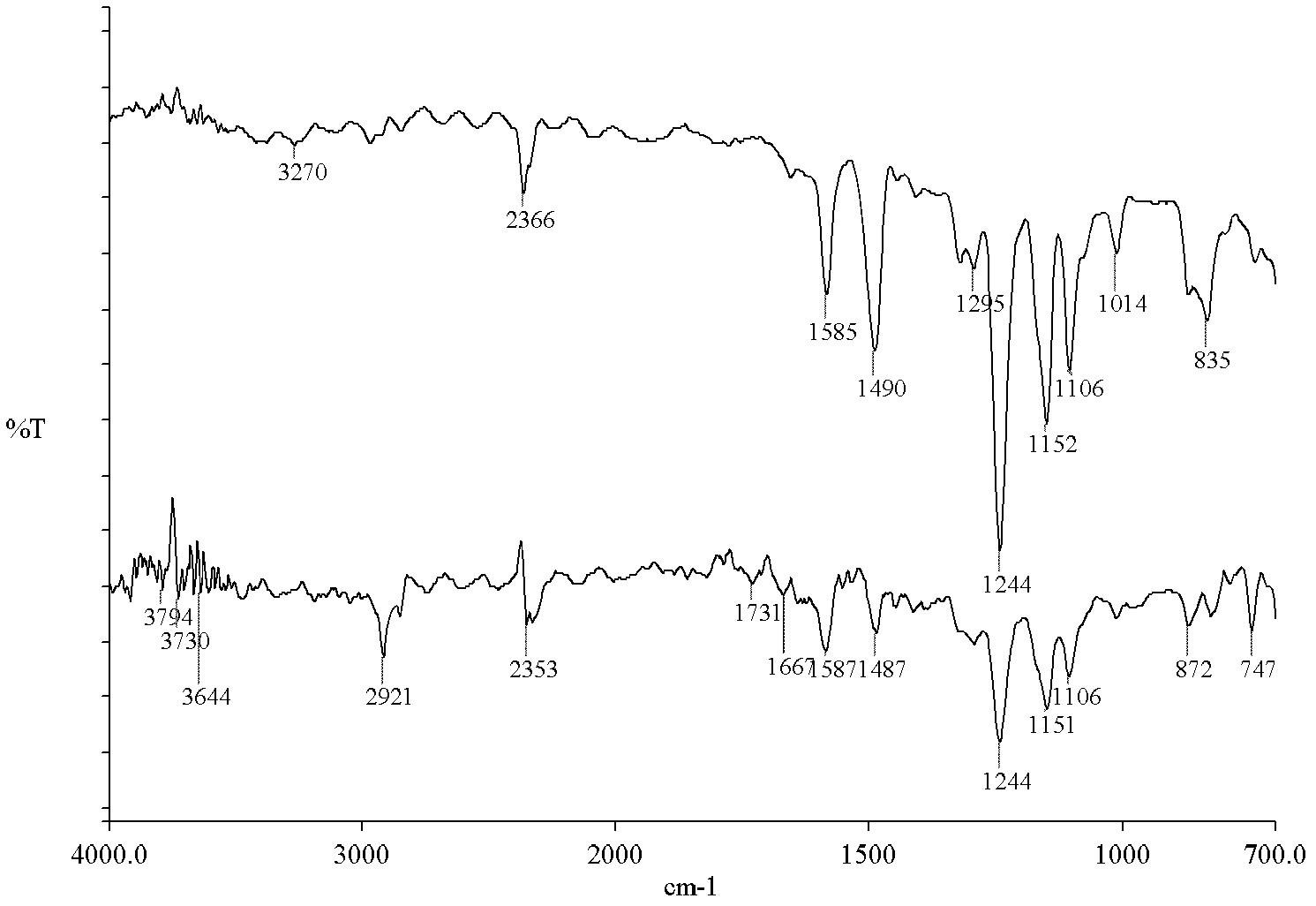A method for preparation of enantioselective composite membrane
An enantioselective, composite membrane technology, applied in the field of preparation of enantioselective composite nanofiltration membranes, can solve the problem of selectivity decline
- Summary
- Abstract
- Description
- Claims
- Application Information
AI Technical Summary
Problems solved by technology
Method used
Image
Examples
Embodiment 1
[0053] The preparation method of the enantioselective composite membrane comprises: immersing the polysulfone UF membrane in the aqueous solution of 1% arginine and piperazine (Piprazine) (50:50) for 3 minutes, and keeping the solution by adding 1N NaOH pH 12, excess solution was drained for 15 min, membrane was then immersed in 0.5% trimesoyl chloride in hexane for 2 min, excess solution was drained for 2 min, and membrane was air dried for 4 Hour. The films were heat cured at a temperature of 90°C for 5 minutes, cooled to a temperature of 25°C, air dried for 2 hours, and soaked in deionized water for up to 24 hours. The separation and enantioselectivity of the membranes for arginine were tested under standard conditions: 0.1% aqueous solution of racemic arginine was used as feed at a flow rate of 500 ml per minute at 552 KPa. The membrane exhibited a permeation rate of 636 l / m 2 / day, the arginine rejection (rejection) was 75%, and the enantioselectivity to d-arginine was ...
Embodiment 2
[0055]The preparation method of the enantioselective composite membrane comprises: immersing the polysulfone UF membrane in the aqueous solution of 1% arginine and piperazine (50:50) for 3 minutes, and maintaining the pH of the aqueous solution at 12 by adding 1N NaOH , the excess solution was drained over 15 minutes, the membrane was then immersed in 1% trimesoyl chloride in hexane for 2 minutes, the excess solution was drained over 5 minutes, and the membrane was air dried for 4 hours. The films were heat cured at a temperature of 90°C for 5 minutes, cooled to a temperature of 25°C, air dried for 2 hours, and soaked in deionized water for up to 24 hours. The separation and enantioselectivity of the membrane for arginine were tested under standard conditions: 0.1% aqueous solution of racemic arginine was used as feed, the flow rate was 500 ml per minute at 552 KPa. After 6 hours the membrane exhibited a permeation rate of 734 l / m 2 / day, the arginine rejection rate was 66%, ...
Embodiment 3
[0057] The preparation method of the enantioselective composite membrane comprises: immersing the polysulfone UF membrane in 1% piperazine aqueous solution for 3 minutes, maintaining the pH of the aqueous solution at 12 by adding 1N NaOH, draining off the excess solution for 15 minutes, The membrane was then dipped in a 0.5% solution of trimesoyl chloride in hexane for 2 minutes, the excess solution was drained over 5 minutes, and the membrane was air dried for 4 hours. The films were heat cured at a temperature of 90°C for 5 minutes, cooled to a temperature of 25°C, air dried for 2 hours, and soaked in deionized water for up to 24 hours. The membrane was tested under standard conditions: 0.1% aqueous solution of racemic arginine was used as feed, the flow rate was 500 ml per minute at 552 KPa. The membrane exhibited a permeation rate of 1125 l / m 2 / day, the arginine retention rate was 60%. The membrane showed no enantioselectivity for d-arginine.
PUM
 Login to View More
Login to View More Abstract
Description
Claims
Application Information
 Login to View More
Login to View More - R&D
- Intellectual Property
- Life Sciences
- Materials
- Tech Scout
- Unparalleled Data Quality
- Higher Quality Content
- 60% Fewer Hallucinations
Browse by: Latest US Patents, China's latest patents, Technical Efficacy Thesaurus, Application Domain, Technology Topic, Popular Technical Reports.
© 2025 PatSnap. All rights reserved.Legal|Privacy policy|Modern Slavery Act Transparency Statement|Sitemap|About US| Contact US: help@patsnap.com

